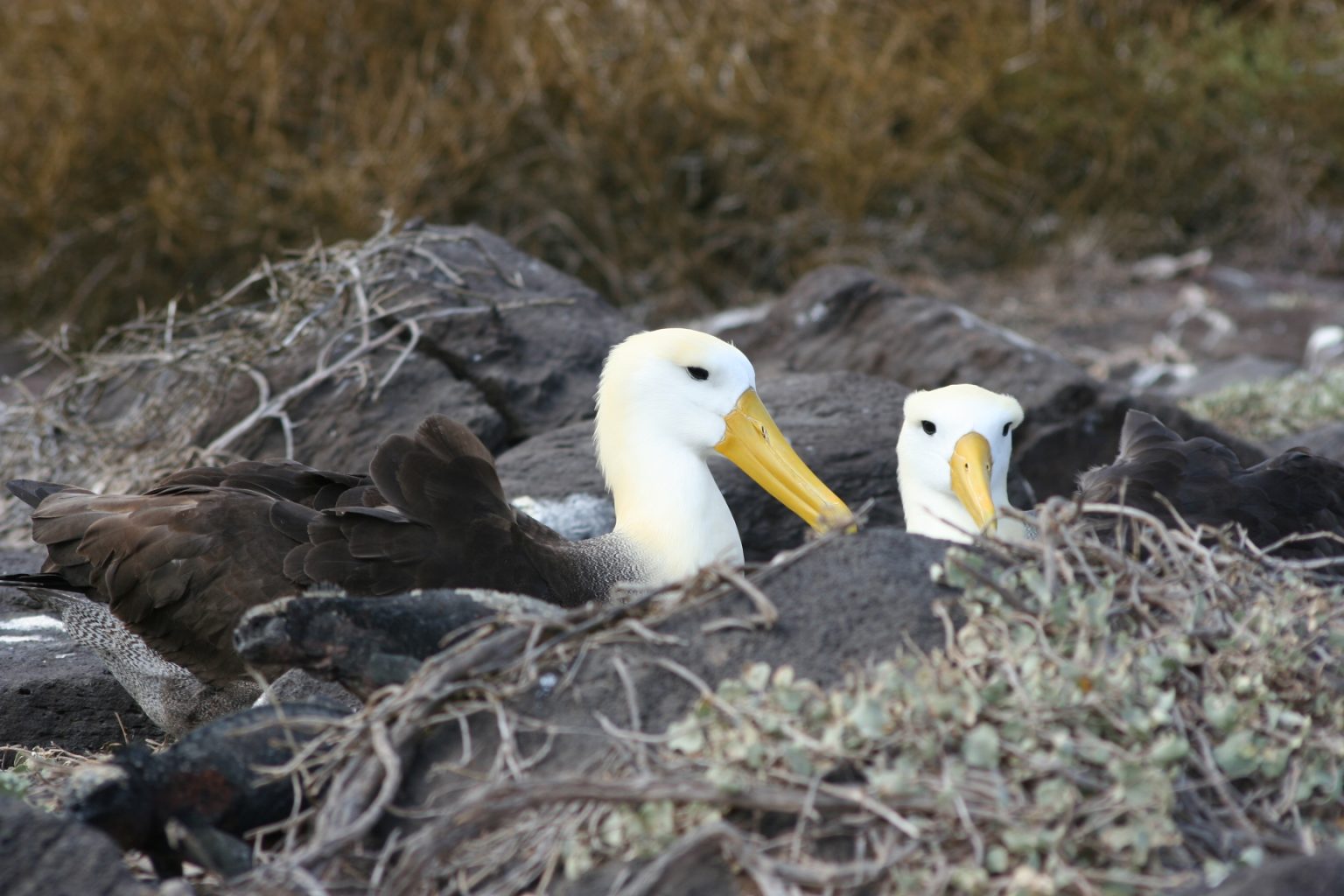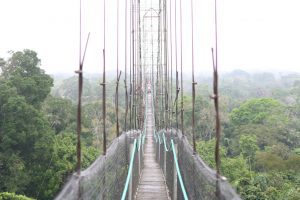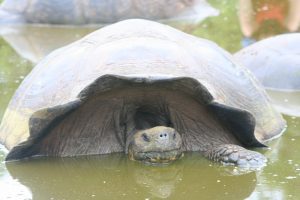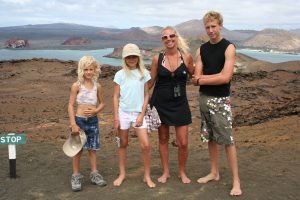🙂 EVERYTHING! Sea lions and snorkelling.
We all woke up at 7am but I skipped breakfast and only grabbed a cup of coffee before heading off to Gardener Bay – the most beautiful long stretch of sandy white beach I have ever seen – stunning.
There were sea lions sprawled in the sand everywhere! Mothers were calling their pups and it was quite a cacophony of moans!
The water was an inviting azure blue and the water a perfect temperature – divine! Caitlyn dug a hole and a sea lion waddled over and sat right in it! So cute!
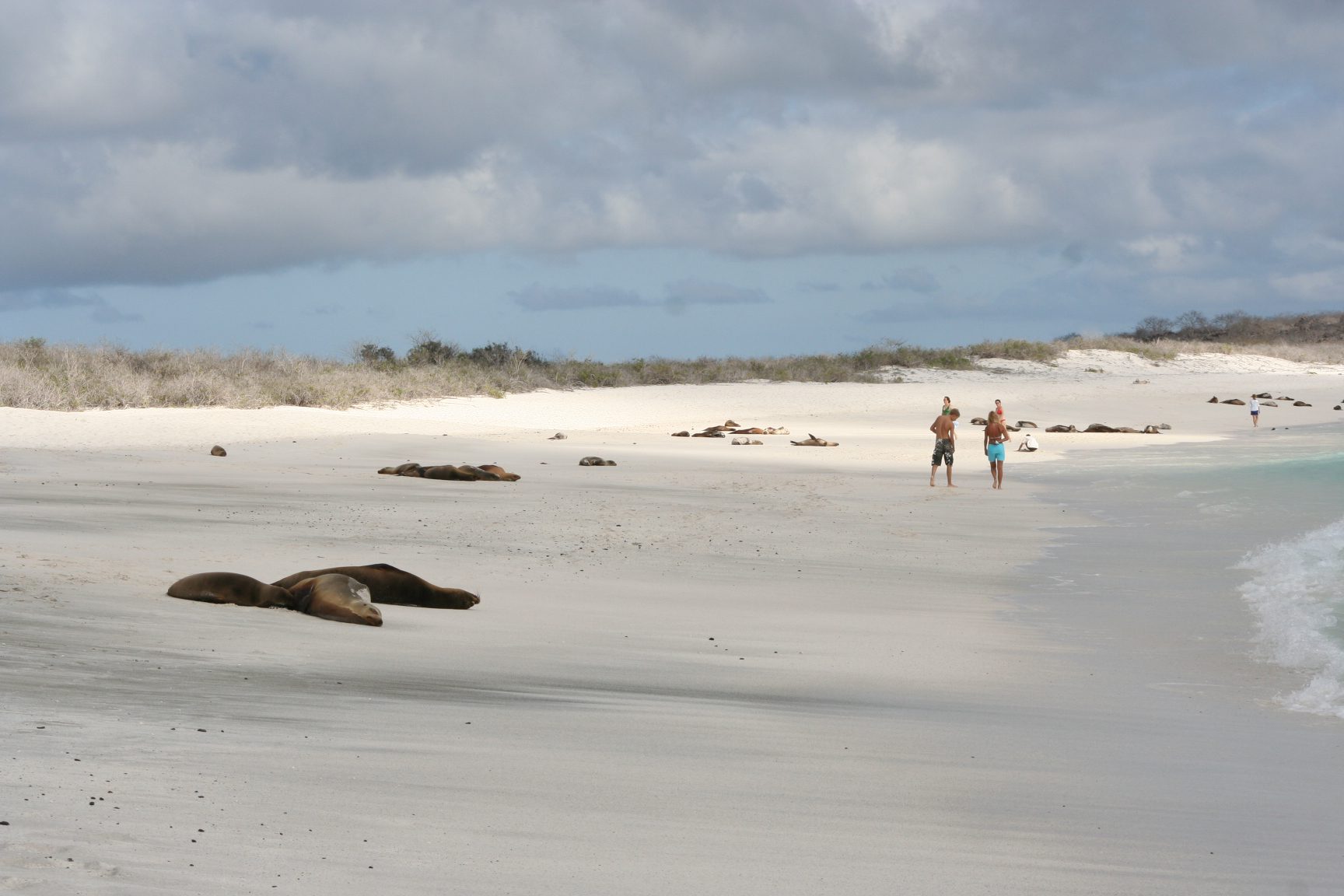
We lay on the beach, chilled and snorkelled. We had so much fun as the sea lions were nibbling our fins and playing with us – magic!! It was a bit scary though when a large bull sea lion swam at Paul and bared his teeth…
A 6ft reef shark was sleeping on the sea bed.
As we swam to the leeward side the current was carrying plankton and all the fish were feeding Saw a huge leatherhead turtle. Massive sea bass, schools of yellow finned sturgeons, schools of gar fish with luminous purple beaks and flukes … the sea was literally shimmering with masses of life – stunning! Also plenty of starfish. An underwater paradise,
The visibility was excellent and the location spectacular surrounded by high cliffs. Nirvana.
We drifted along the cliff walls and were completely captivated by the sheer beauty of it all: orange corals, anemones, shimmering shoals of small fish and a huge stone fish with near perfect camouflage.
Coming back around the sea lions rejoined us to continue with their playful antics. We spotted a porcupine fish. One of the sea lions was playing with Charlotte and swam off with her snorkel which Carlos retrieved for her by chasing the sea lion and splashing her until she dropped it!
The island is comprised of uplifted sub maritime lava flow and is one of the oldest islands. The hood tortoise evolved here and was rescued from the brink of extinction.
Heading back to the beach, a big bull sea lion was guarding the entrance and would not let us pass! We headed cautiously past for a dry landing but more roadblocks ensued! several sea lions, masses of iguanas which were stunning red in colour just lay their soaking up the sun and refusing to move so we had to step gingerly over them trying to avoid stepping on their tails!
There were loads of teeny new born pubs with big brown eyes calling – adorable. Carlos found it difficult to pull us away from them!
We spent time with marine iguanas – fascinating creatures.
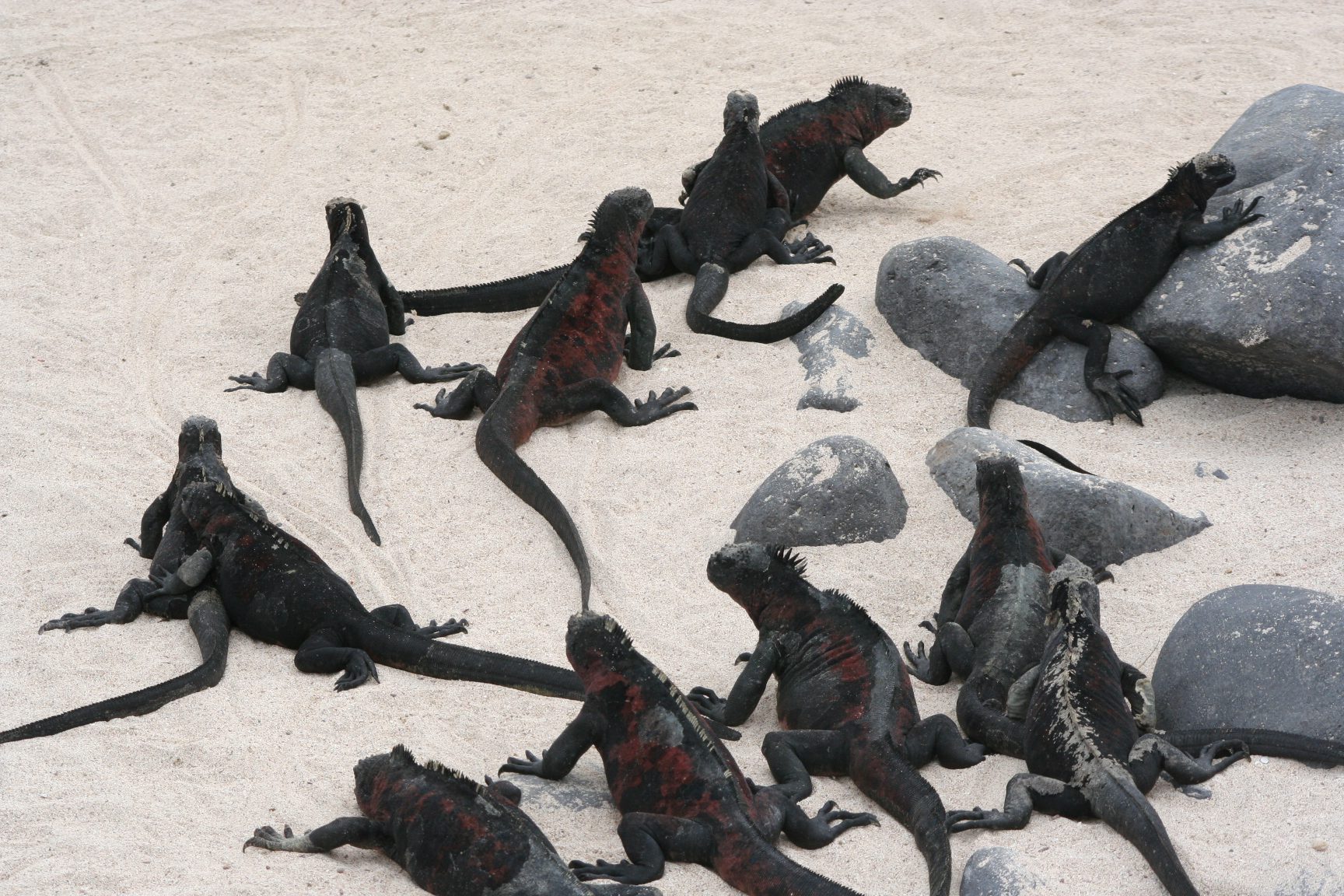
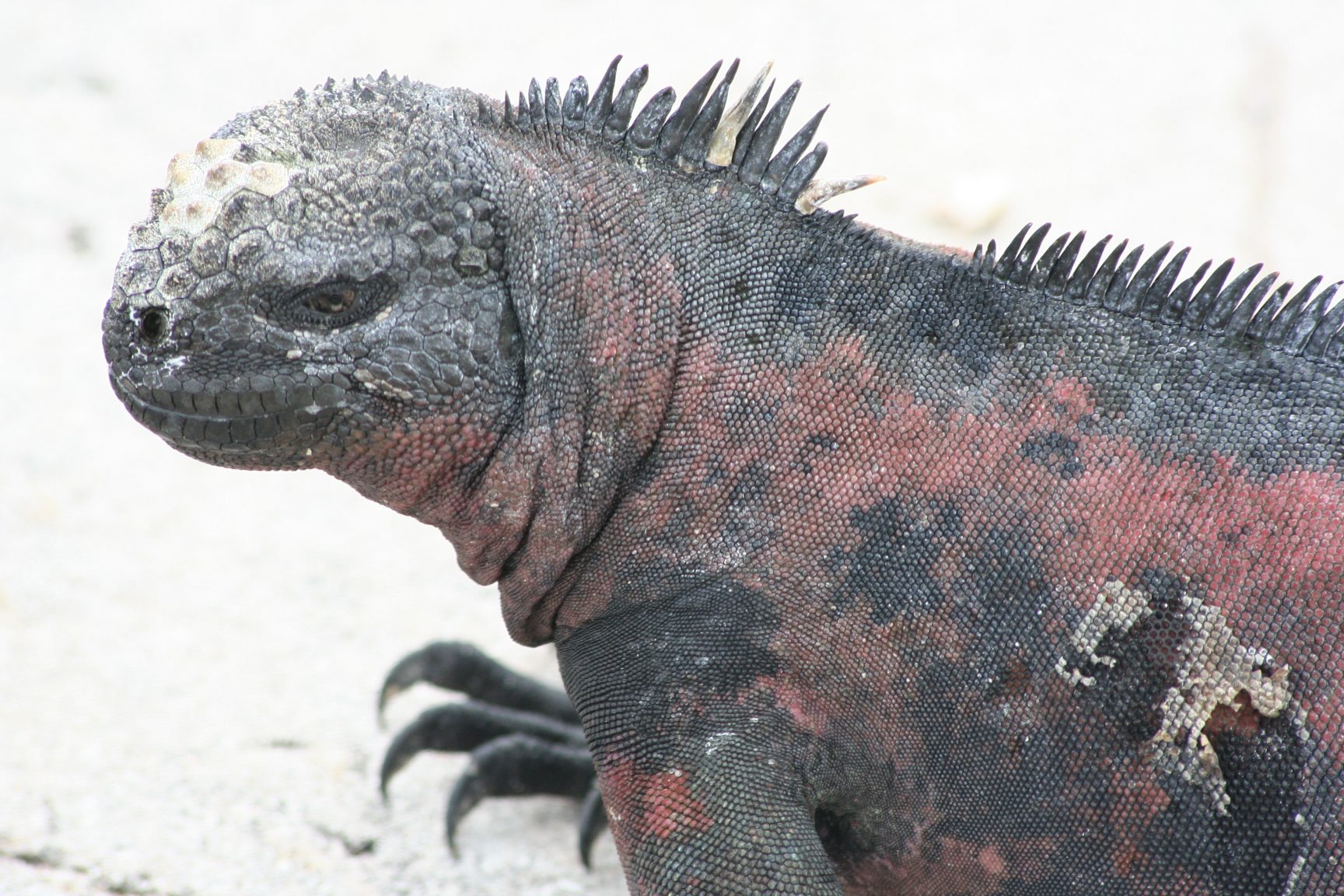
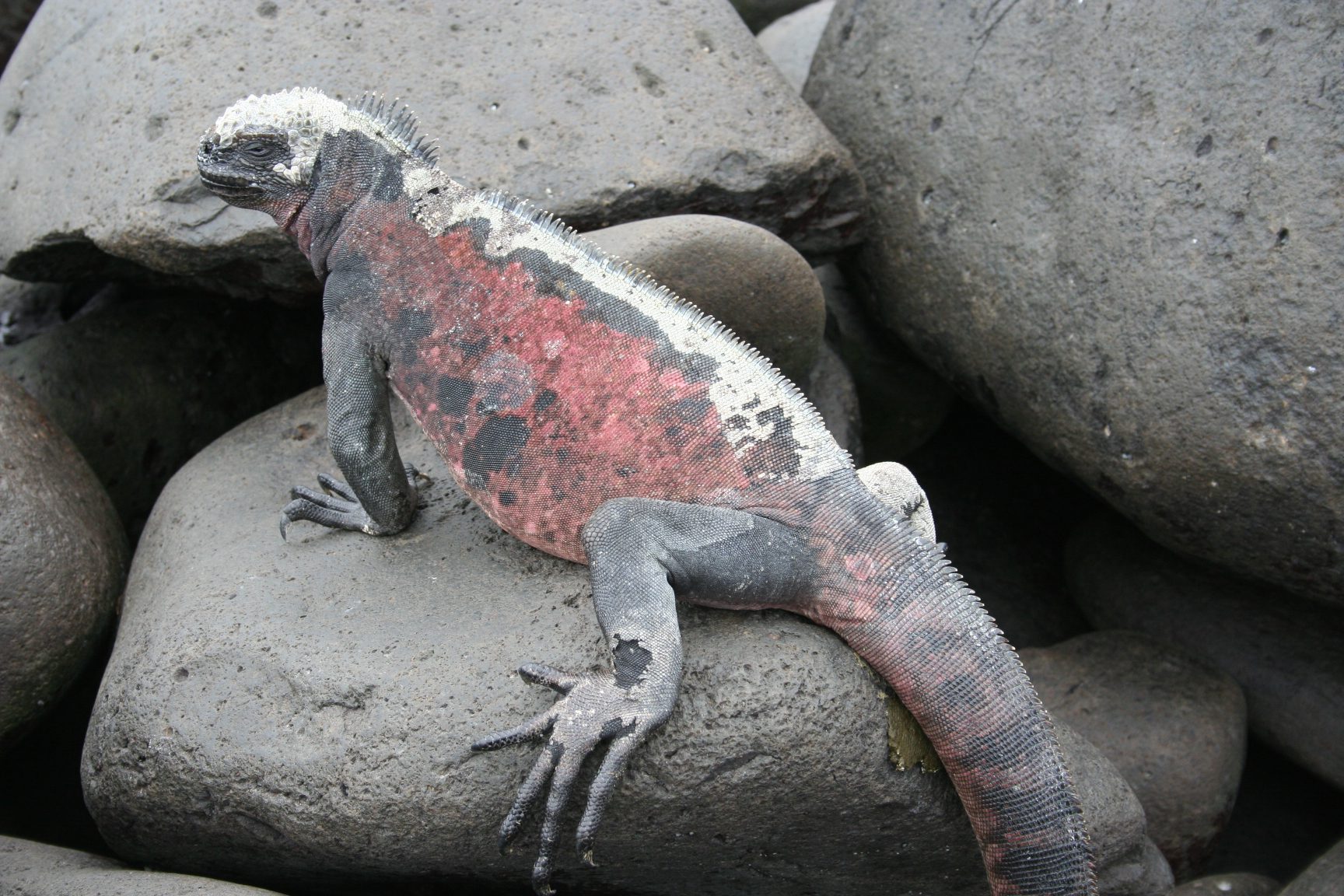

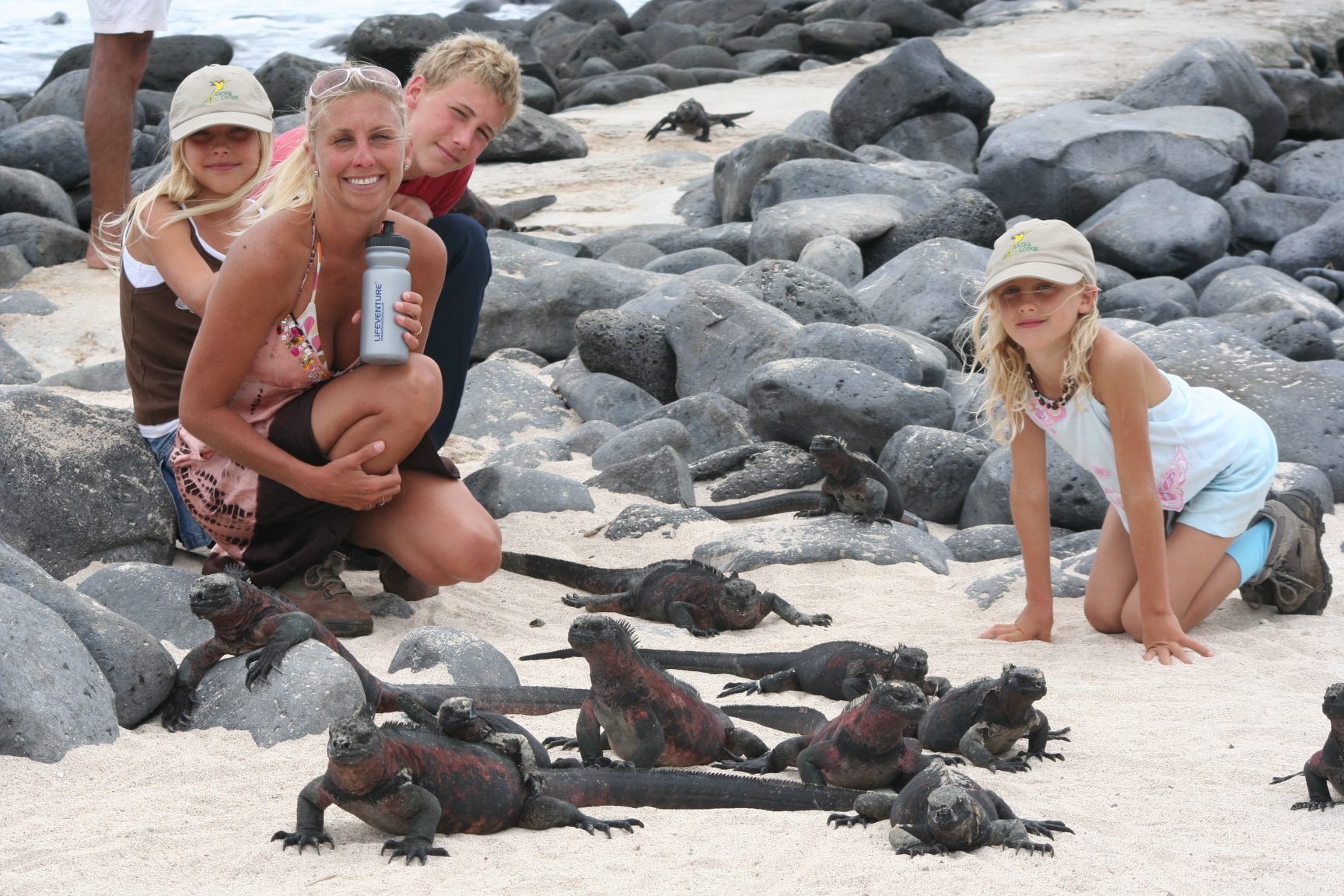
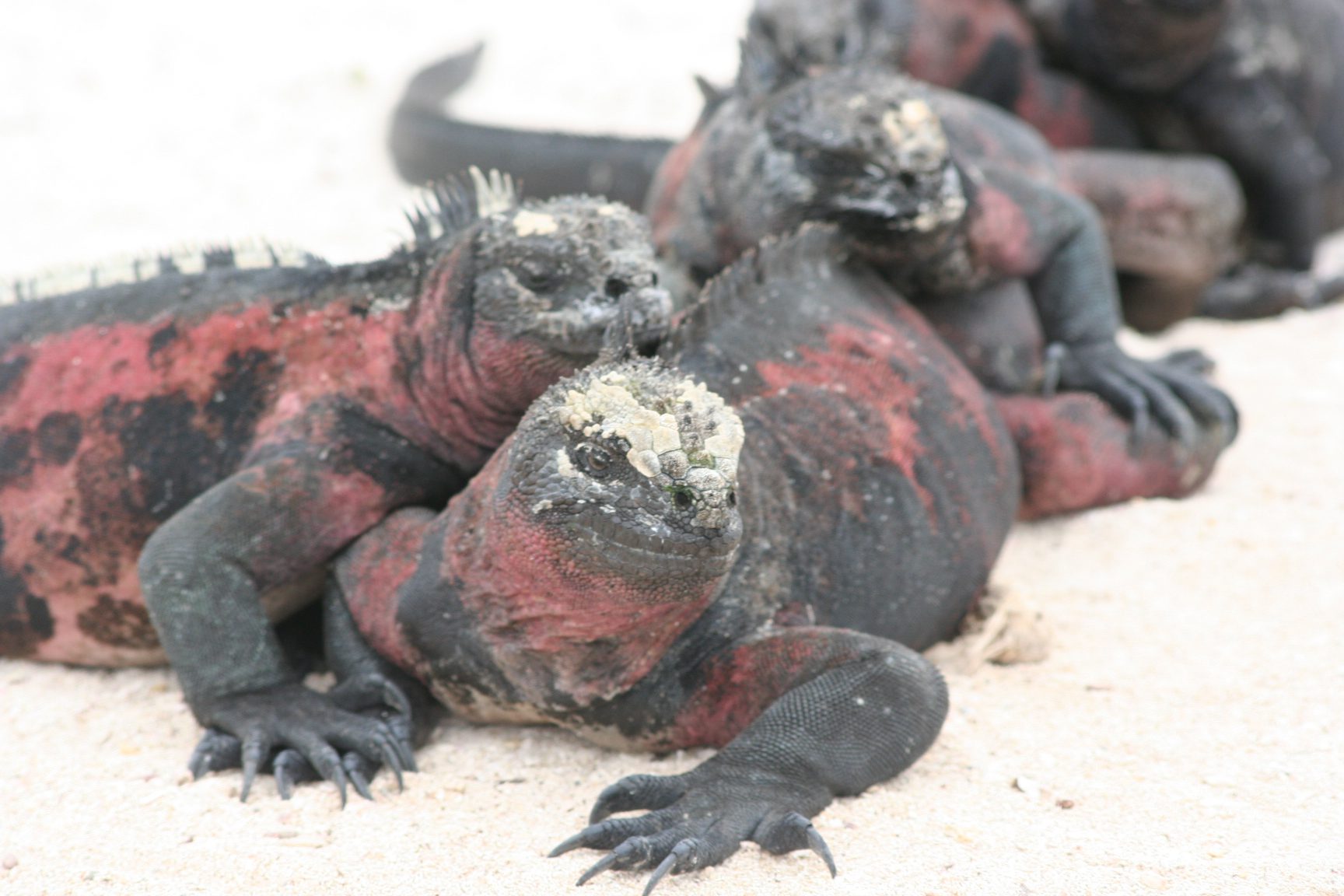
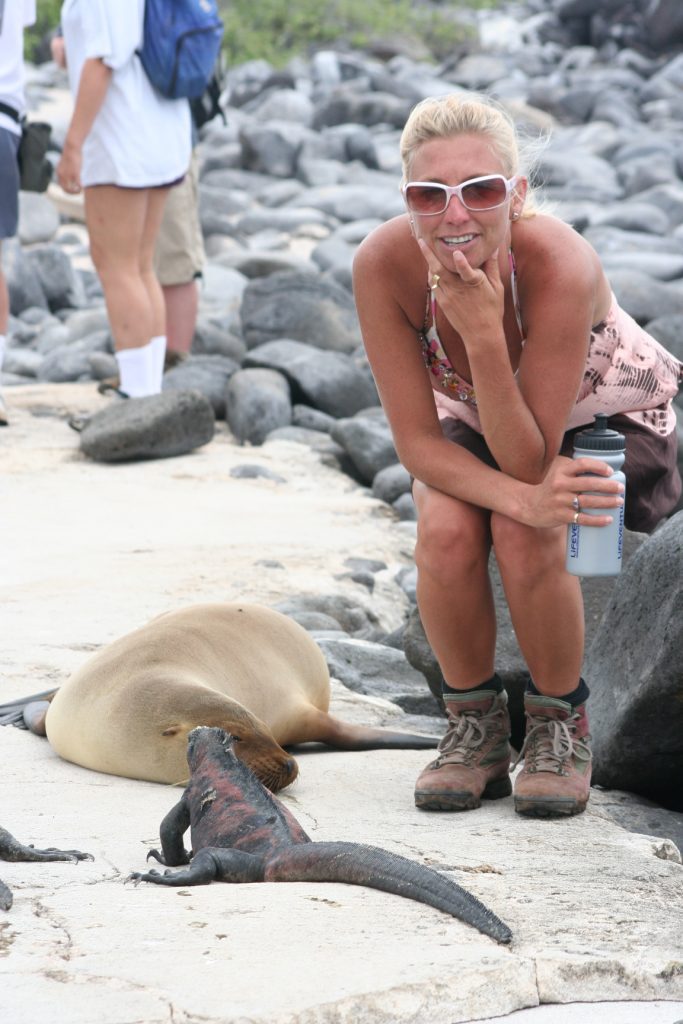
We then took a walk to the Waved Albatross ‘Landing Strip’.
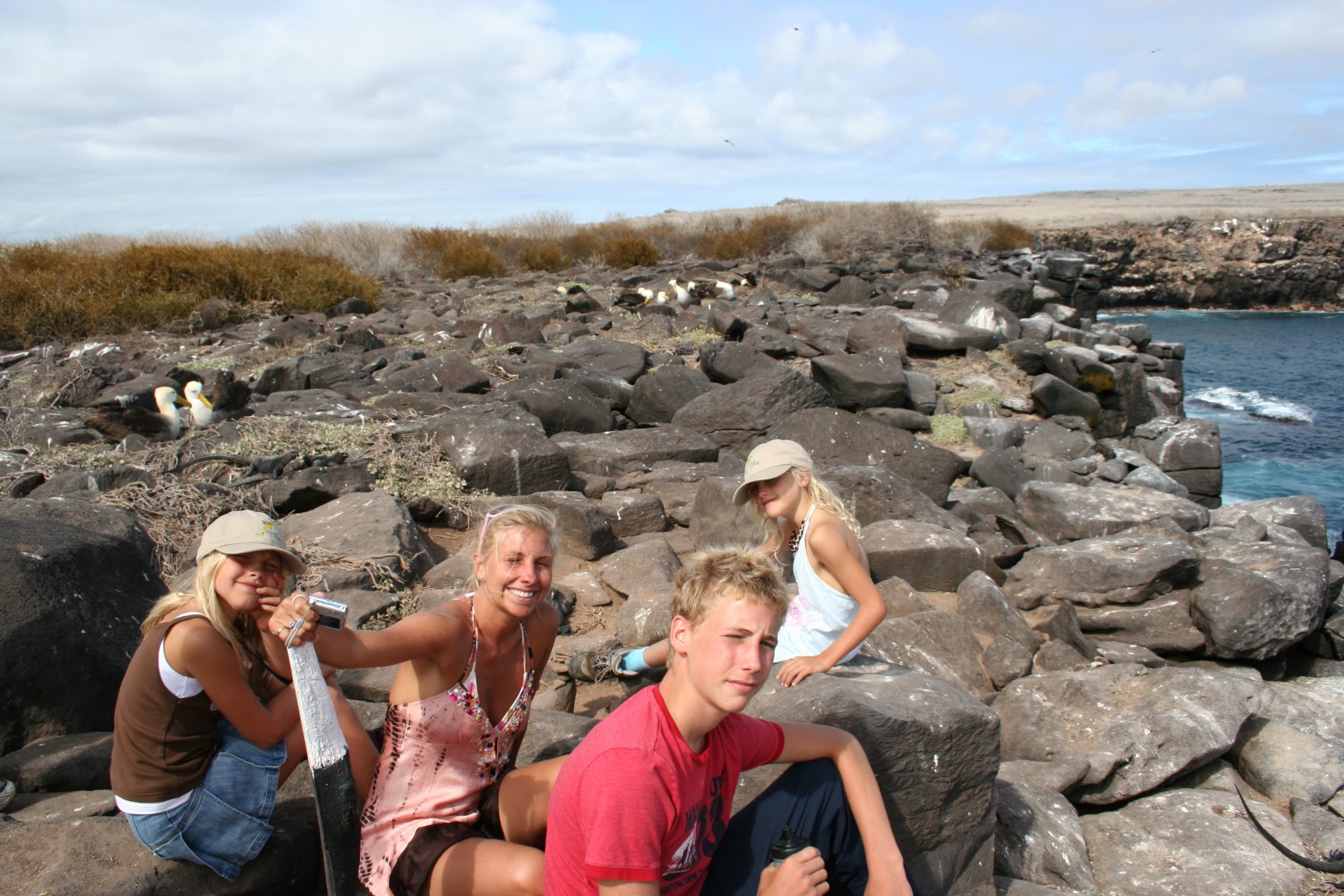
Waved Albatrosses are the largest birds in Galapagos. They are remarkable birds, standing nearly 1 m high with wingspans of 2 to 2.5 m and living up to 40 years. Every year the entire world’s population of adult Waved Albatrosses returns to Española during the nesting season, from April to December.
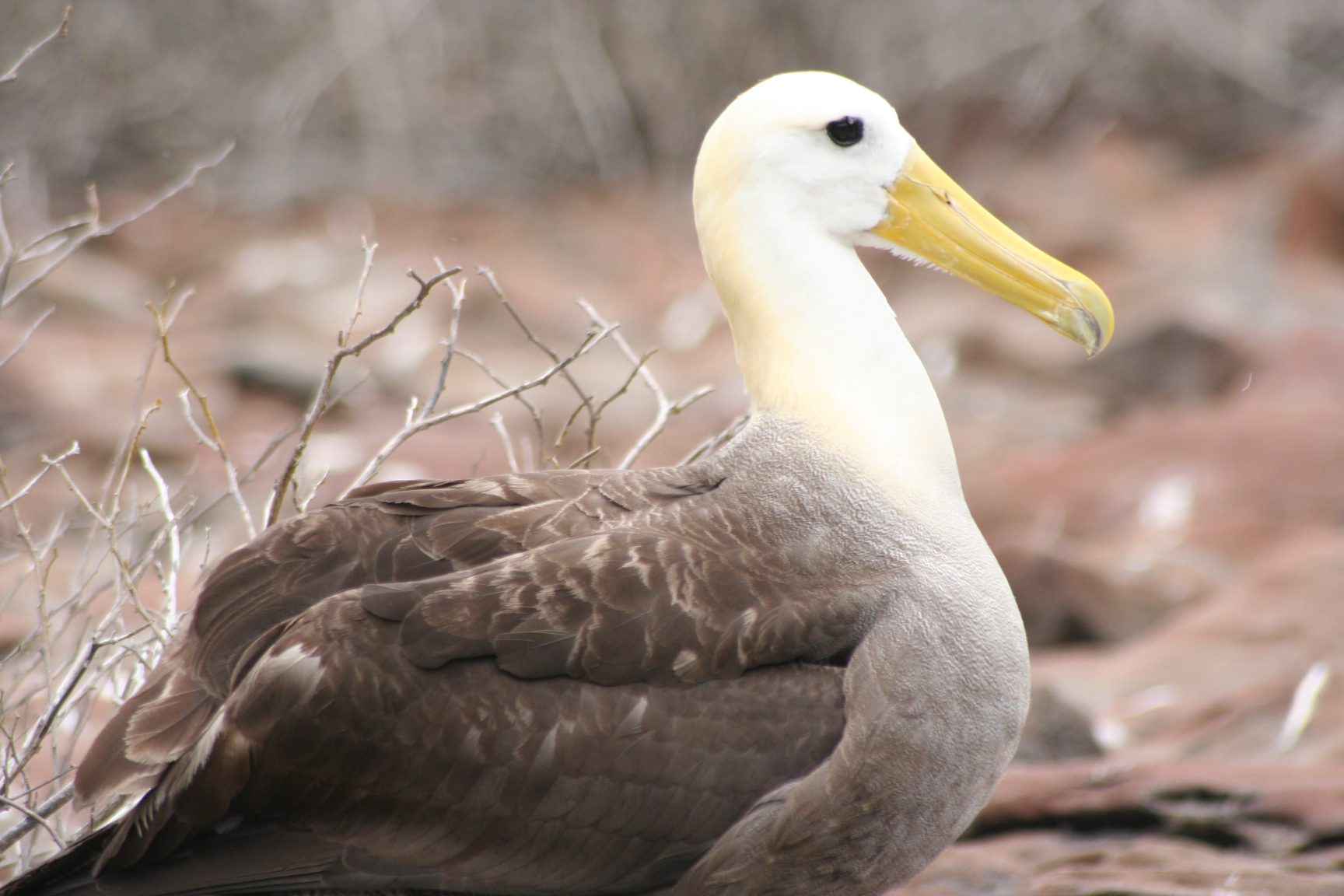

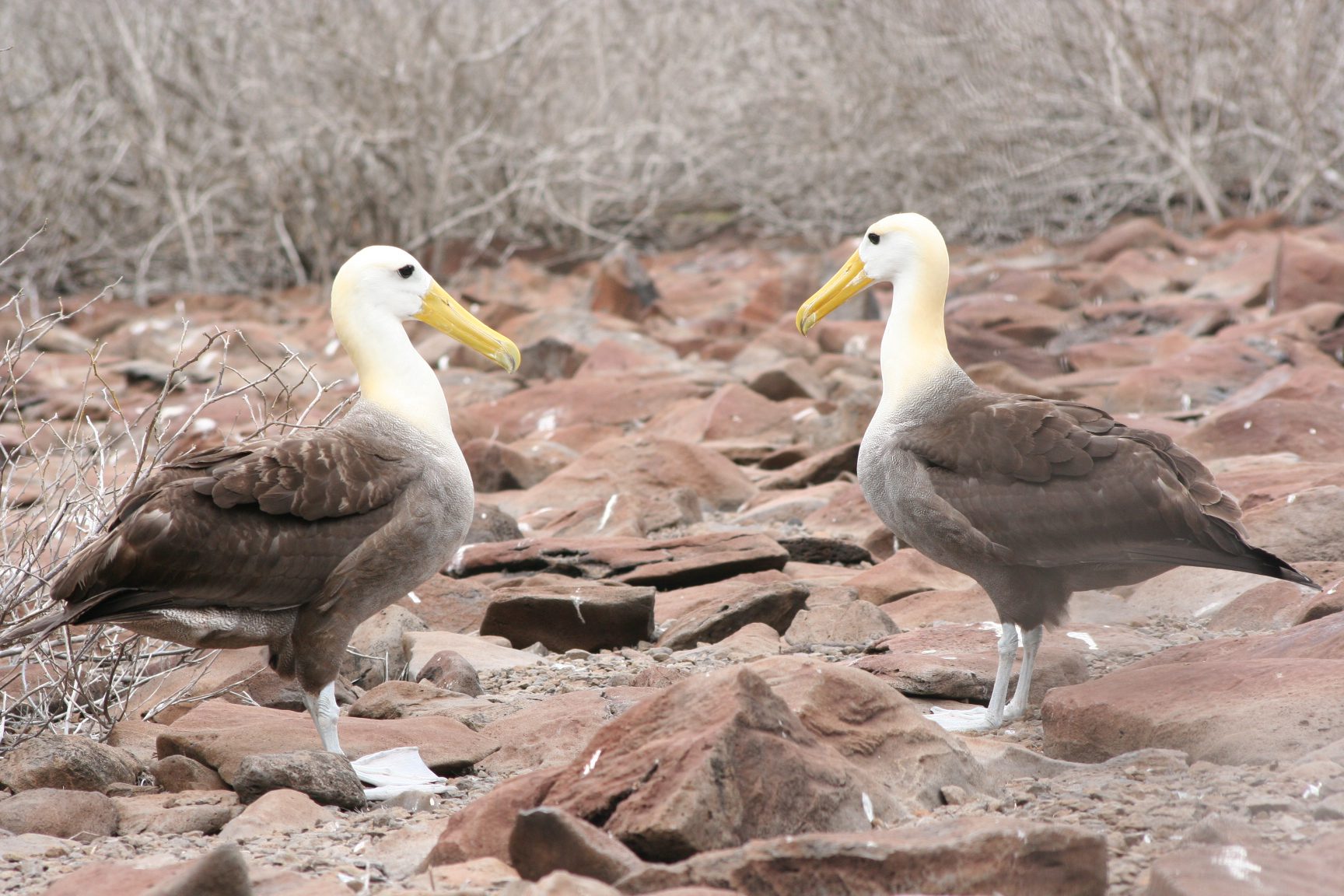
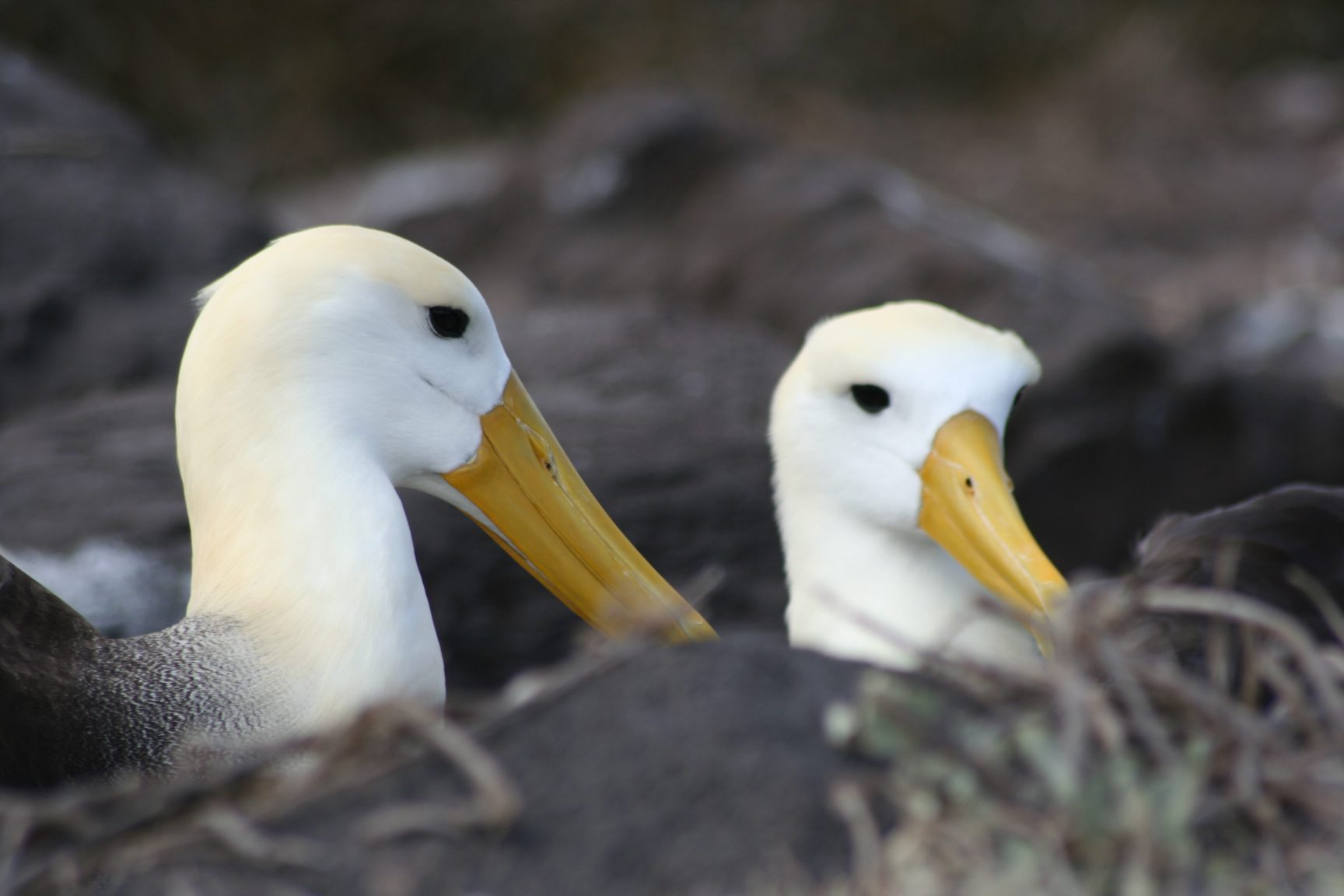
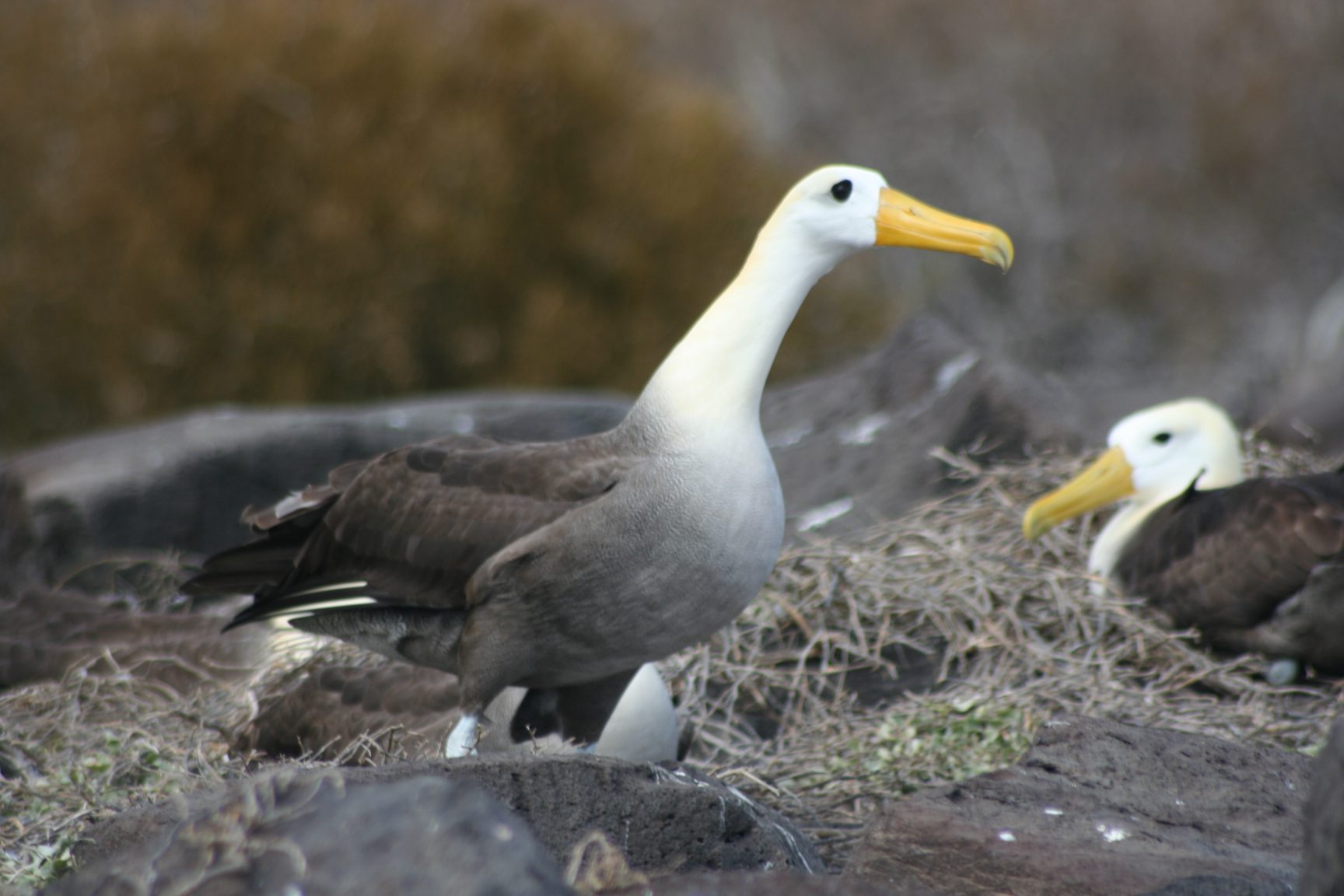

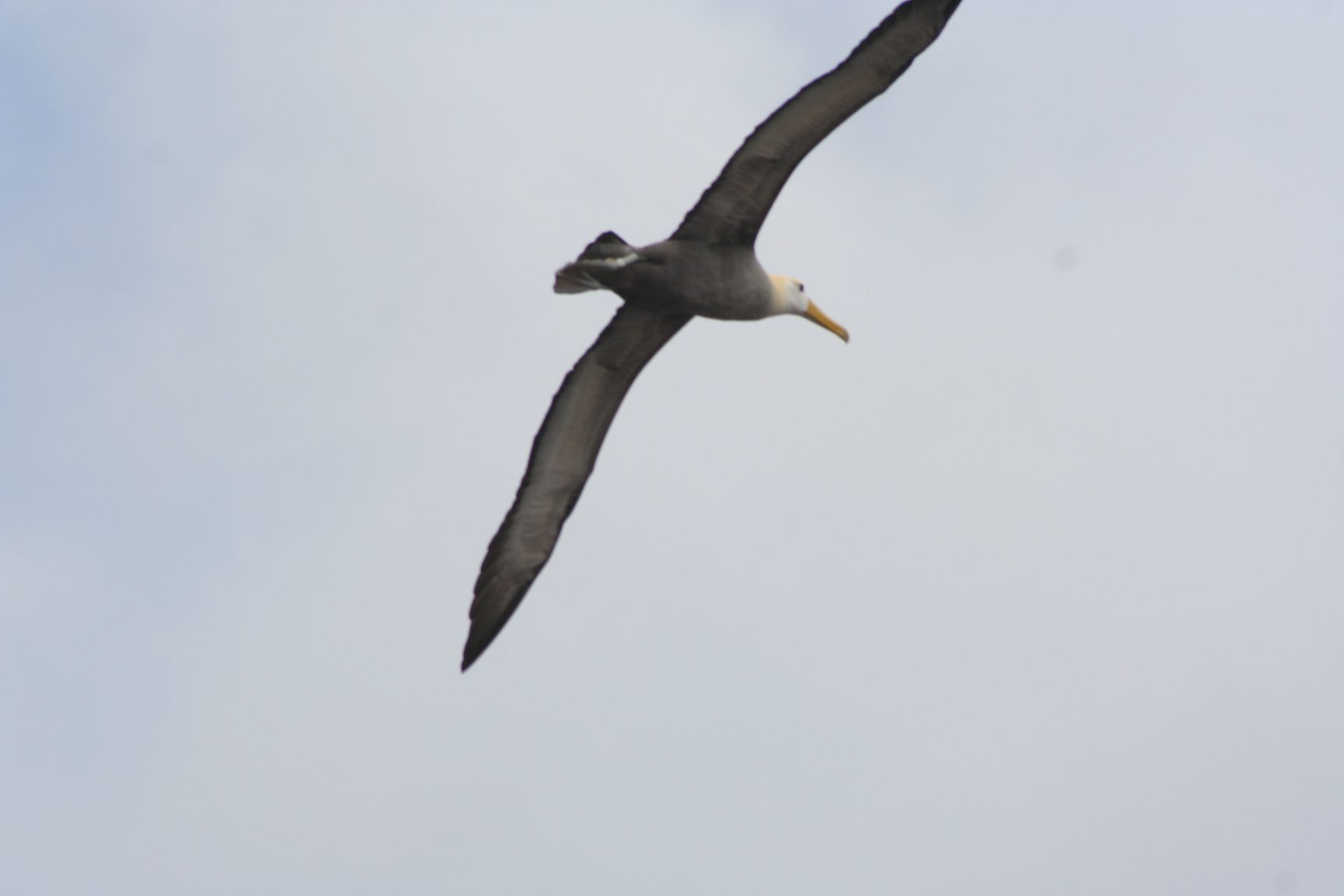
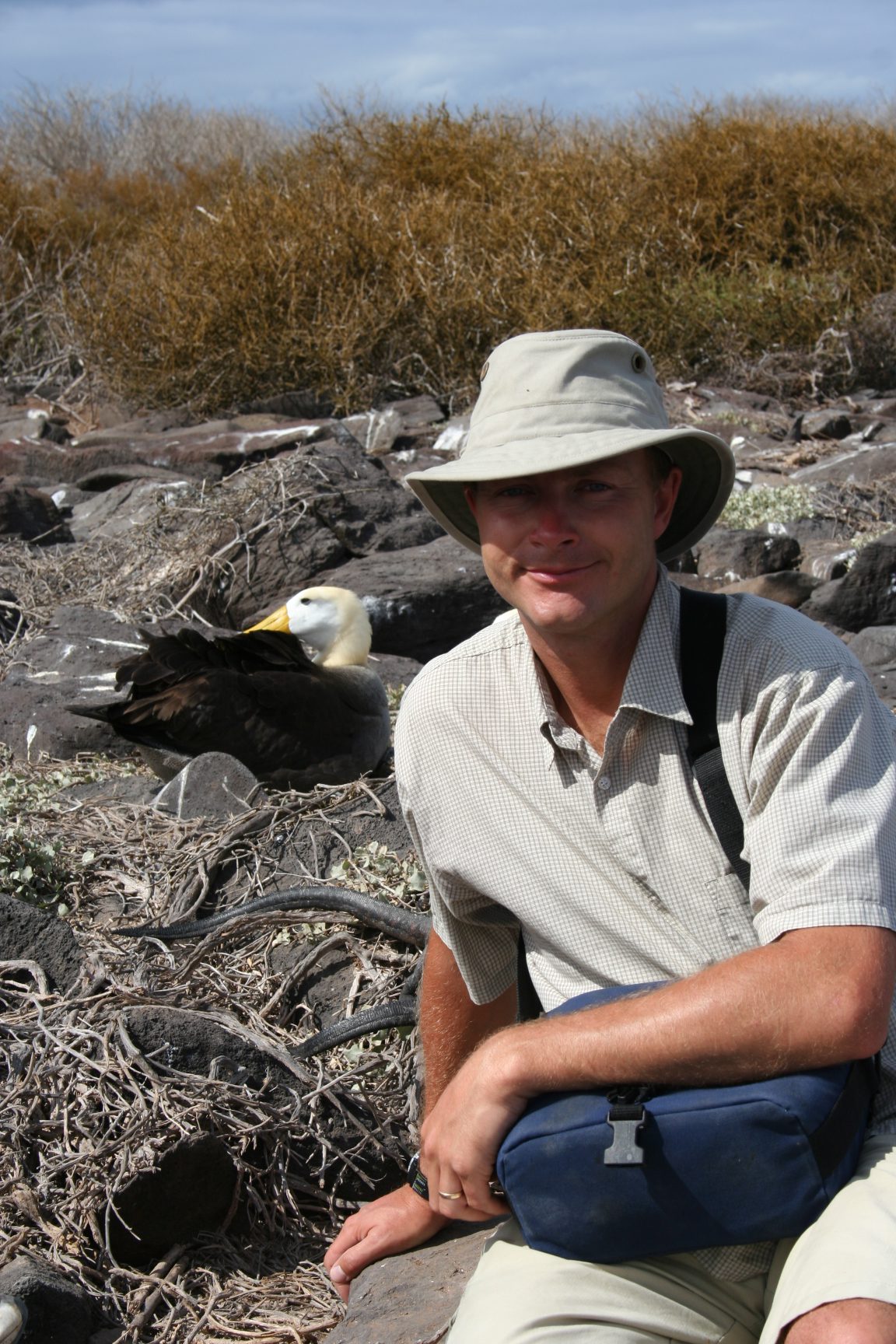
We sat down to watch various ‘couples’ in their courtship dances… They seem to dance, bowing and parading around each other, with heads swaying from side to side in an exaggerated way. Once their long, yellow bills are in contact, they quickly move and slide the ends around each other with gentle strokes and taps making a hollow, wooden honking sounding noise. This bill-circling behaviour is central to the courtship, and the pair repeats this movement frequently throughout the ritual. Waved albatrosses mate for life. Males compete intensely with each other for the chance to mate with females.
The female will lay a single HUGE egg between mid-April and July which they incubate for 2 months and move 1cm per day … so about 40cm by the time they hatch. Both parents will incubate the egg and, after hatching, one will stay with the young chick whilst the other feeds. Bigger chicks are left in nursery groups while their parents spend longer times at sea searching for squid, their favourite food.
Albatrosses are known for their excellent flying skills, as well as for the difficulty they have with take-off and landing. They can glide for miles on end without having to flap their wings a single time. No thermal upwind is necessary to hold them in the air.
During takeoff, they look as though they should be wearing flight goggles, leaning into strong headwinds to leverage the force for liftoff. While they are expert at gaining altitude, these birds are prone to entertainingly awkward crash landings. It is common to see their runway mishaps! After their chick-rearing months, the whole population glides their way to the eastern waters off Galapagos and the coasts between Colombia and Peru. An albatross may cover 3 million miles in their lifetime!
To the human eye, they all look nearly identical, but this bird’s ability to navigate right back to their neighbors and loyal mates among a crowded sea of sea birds is bar-none. Upon return home from fishing expeditions and periods of migration, they find their way back to the same sea bird “precinct” and rejoin their mate. Fascinating creatures which we watched for aged – there were some threesome courtship dances to which they appeared oblivious. Watching them run off the cliffs was incredible – such large clumsy birds on land but once in the air they just glide effortlessly.
We then went to observe the blowhole.
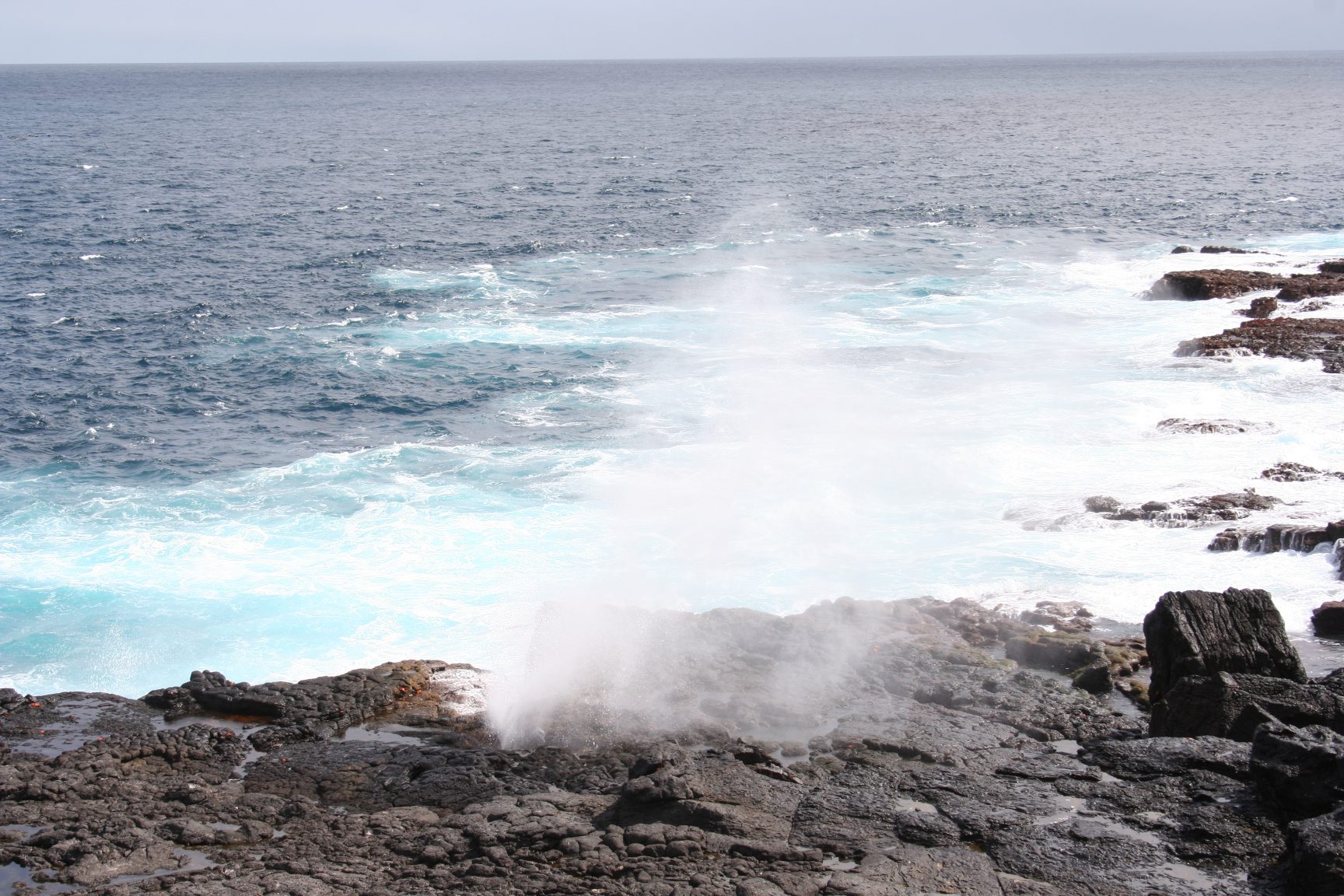
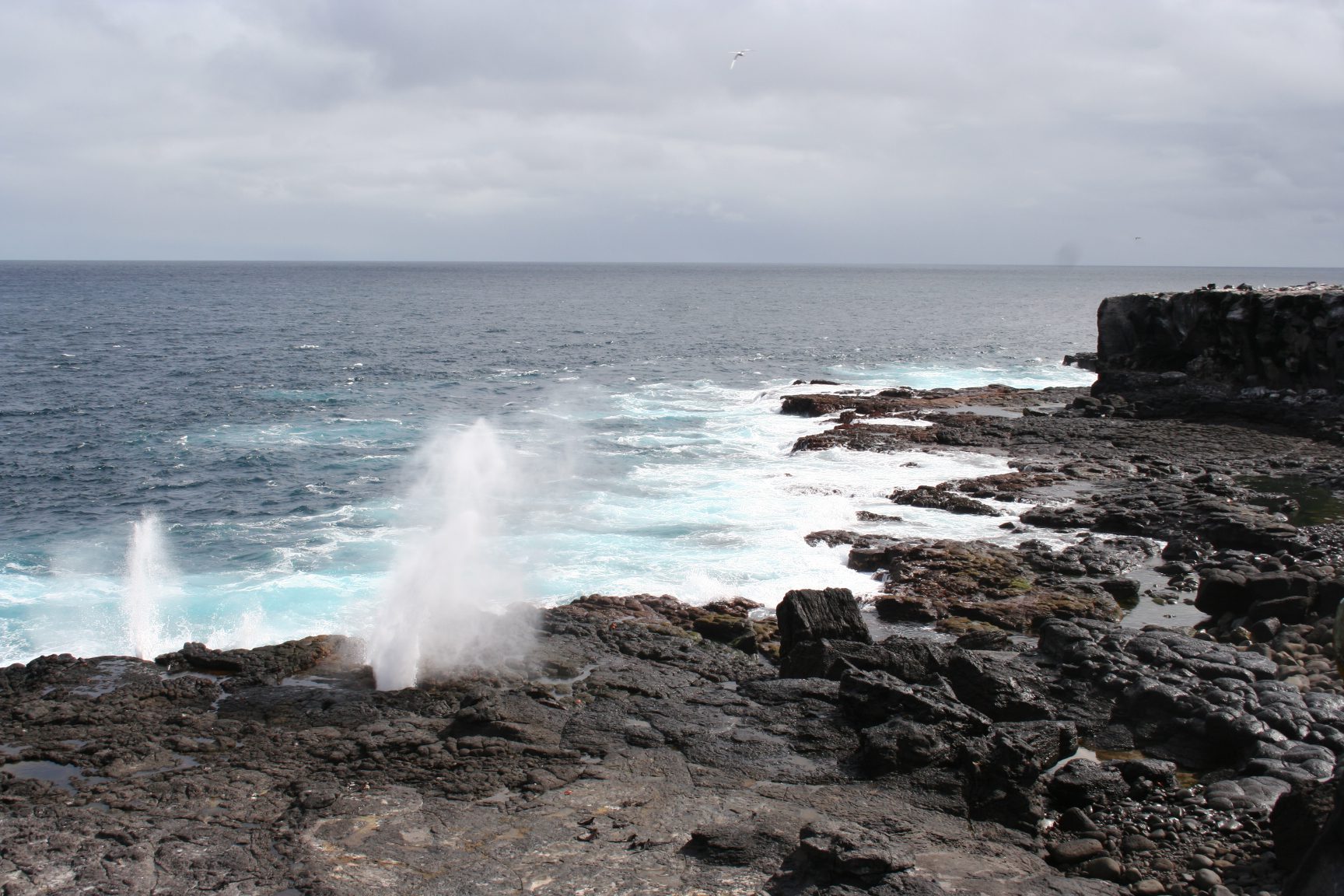
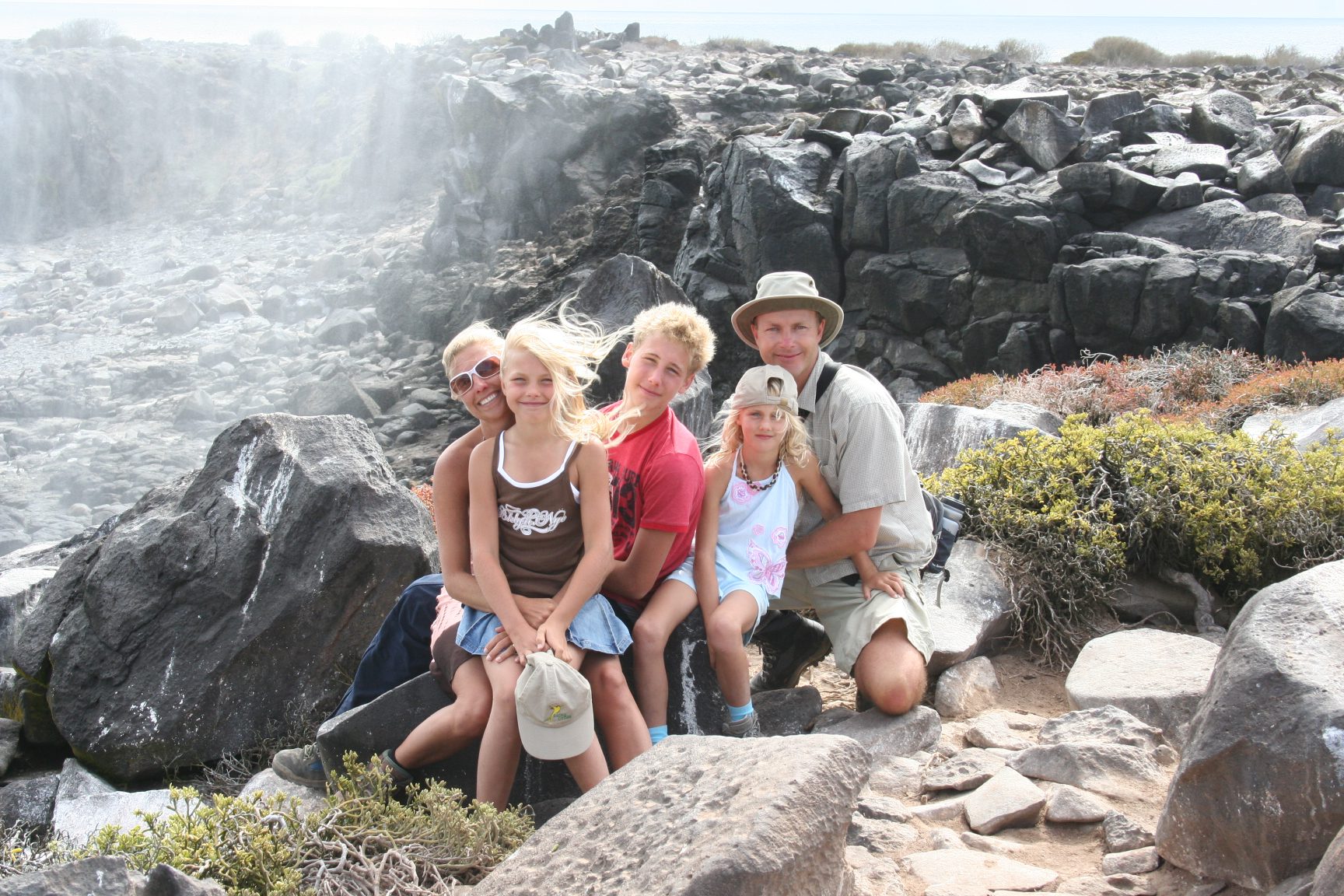
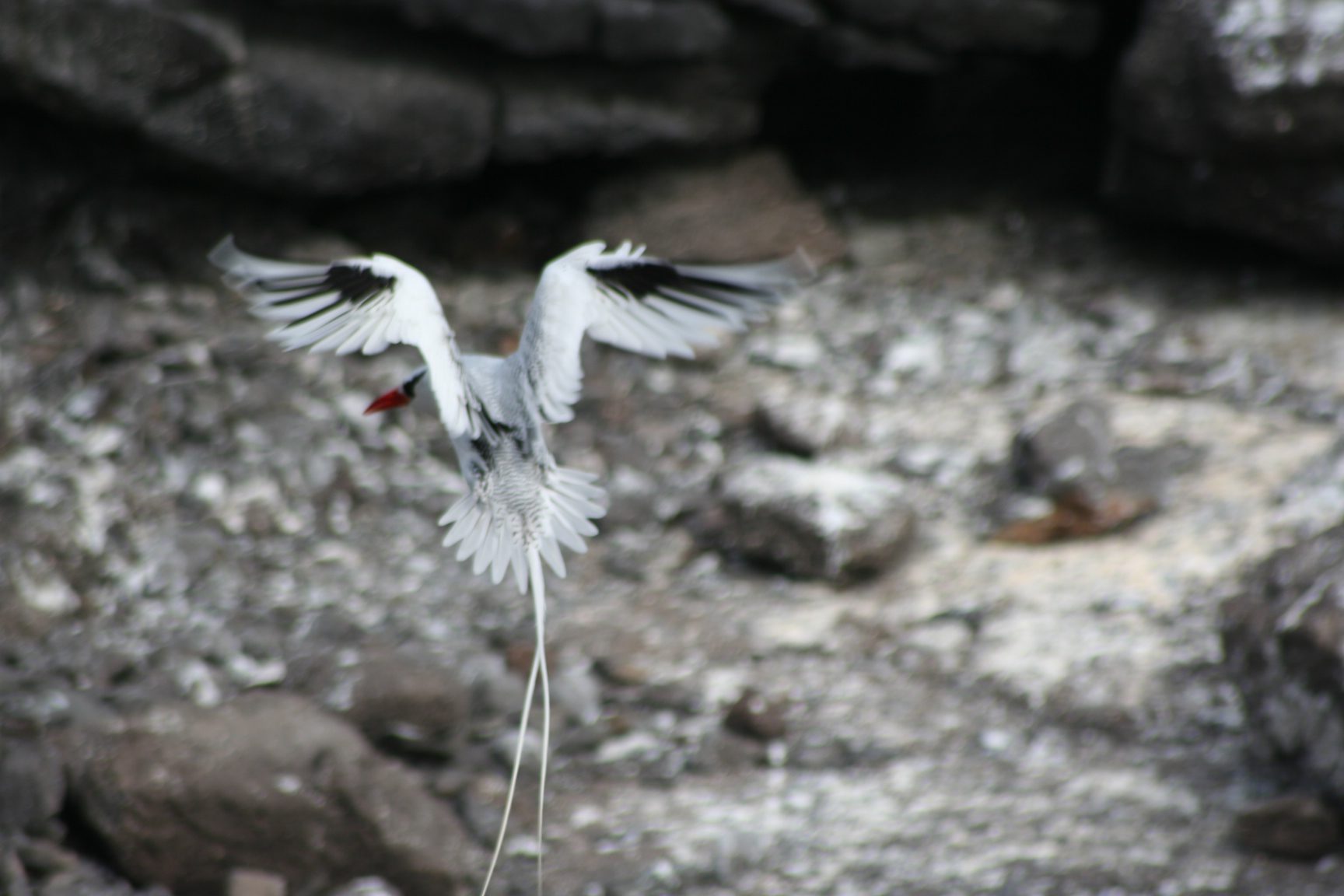
A baby seal was playing with an iguana and biting its tail! The blow hole blew every now and again…while we sat there the diversity was amazing: waved albatross and marine iguana in the foreground and lava lizards, mocking birds in the background and red billed tropic birds circling above us squawking at the nazca boobies. Truly paradise.
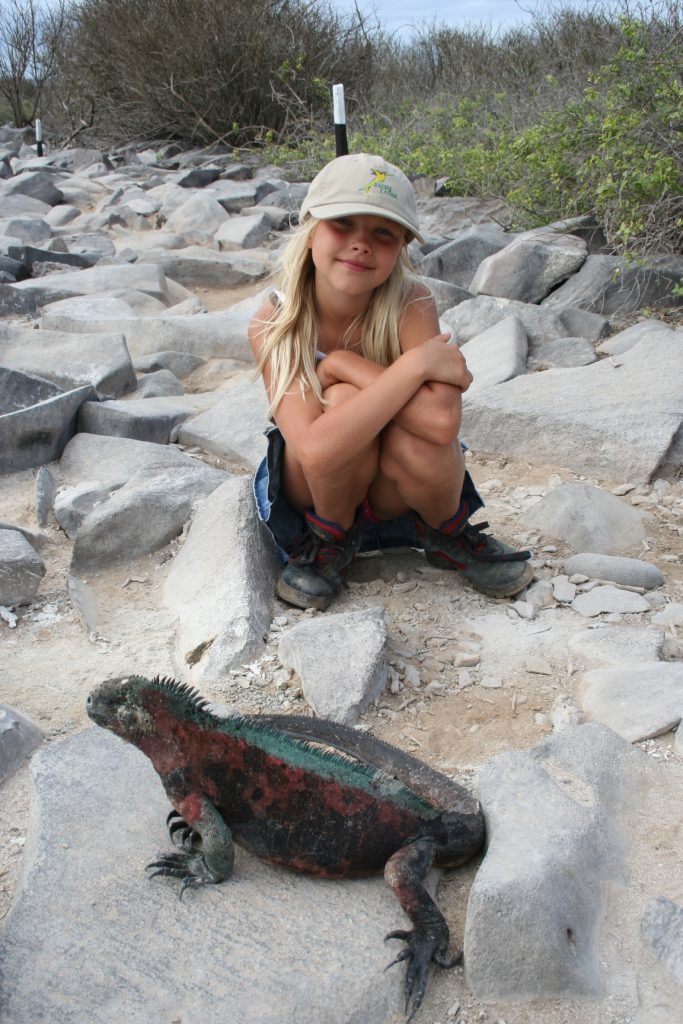
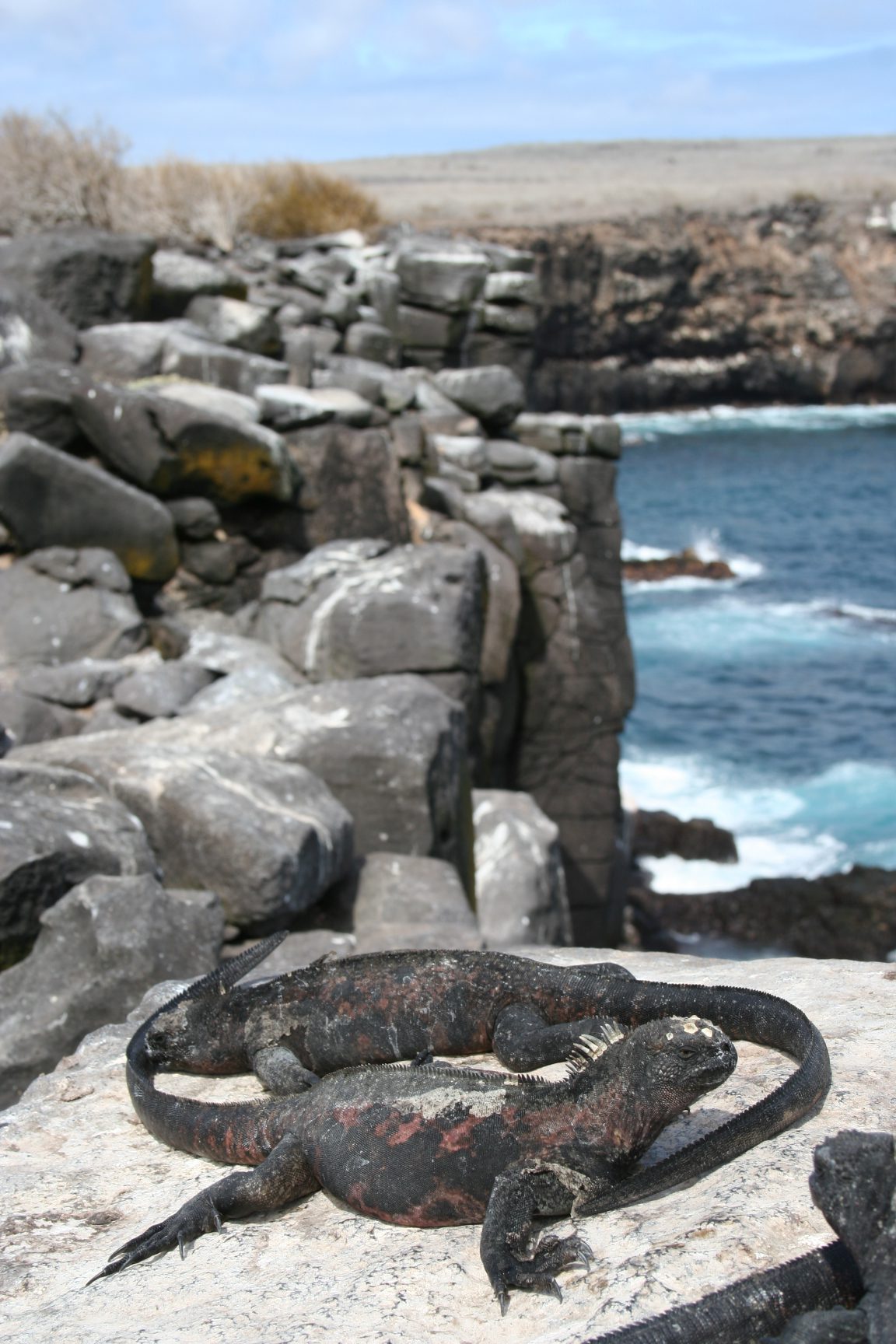
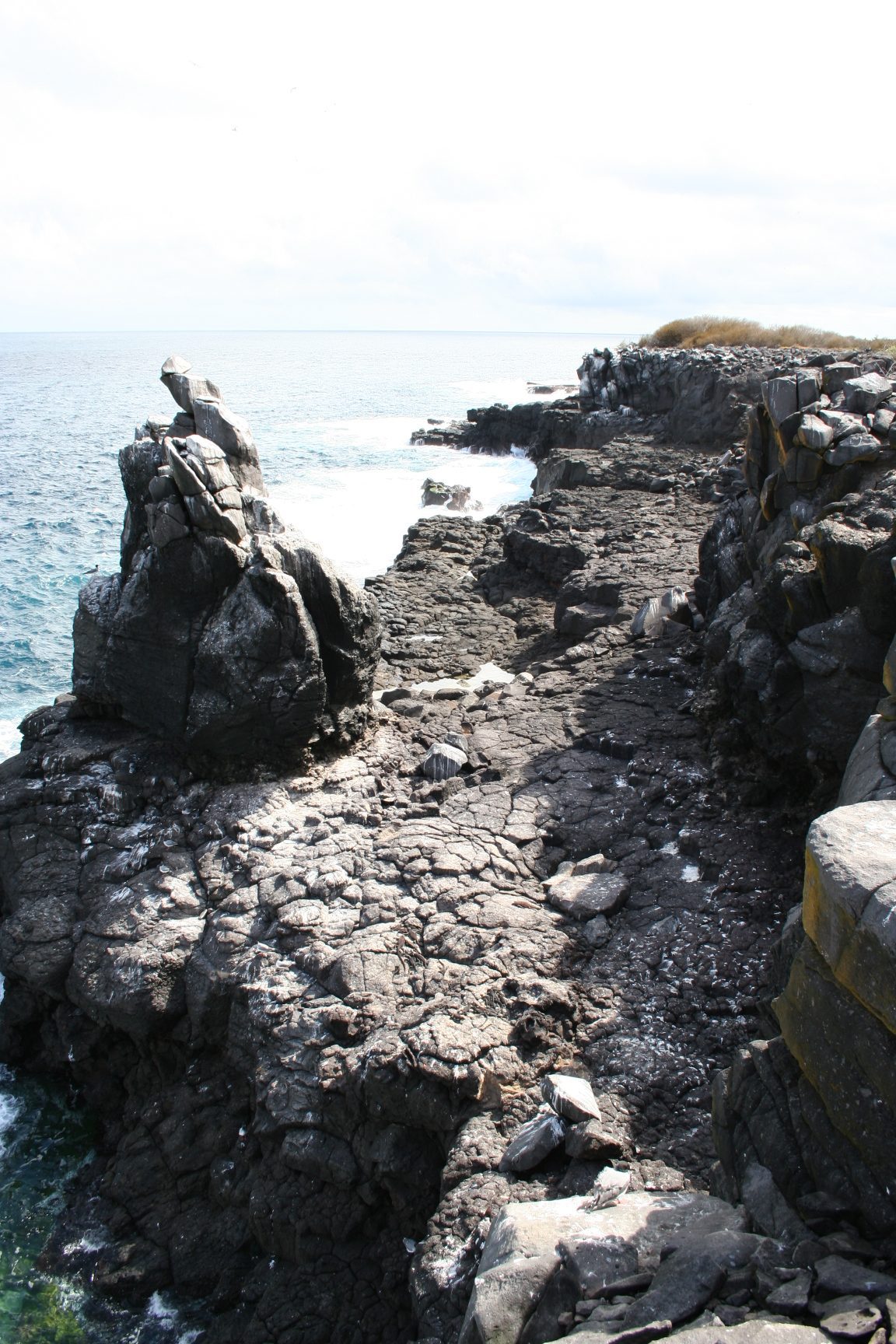
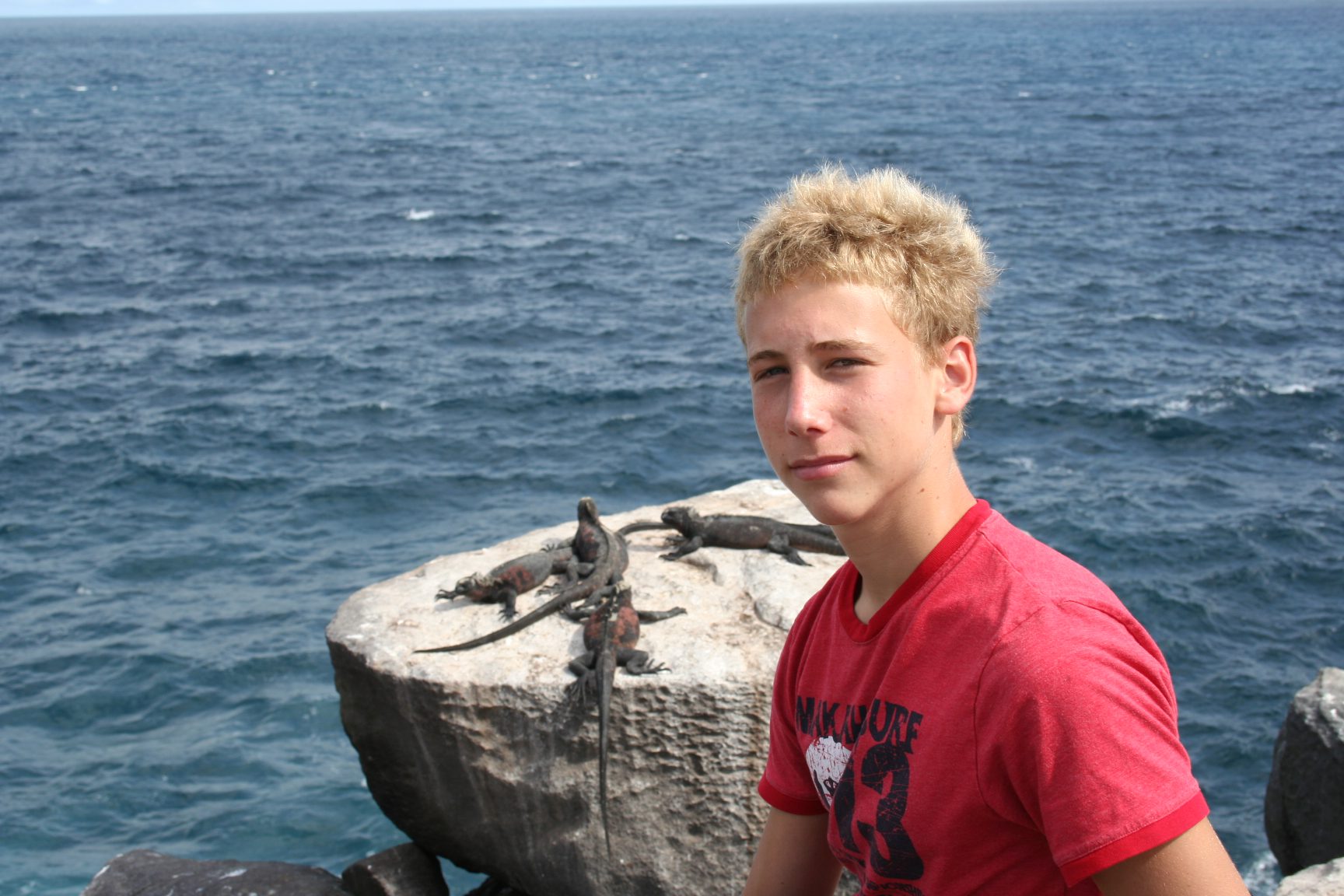
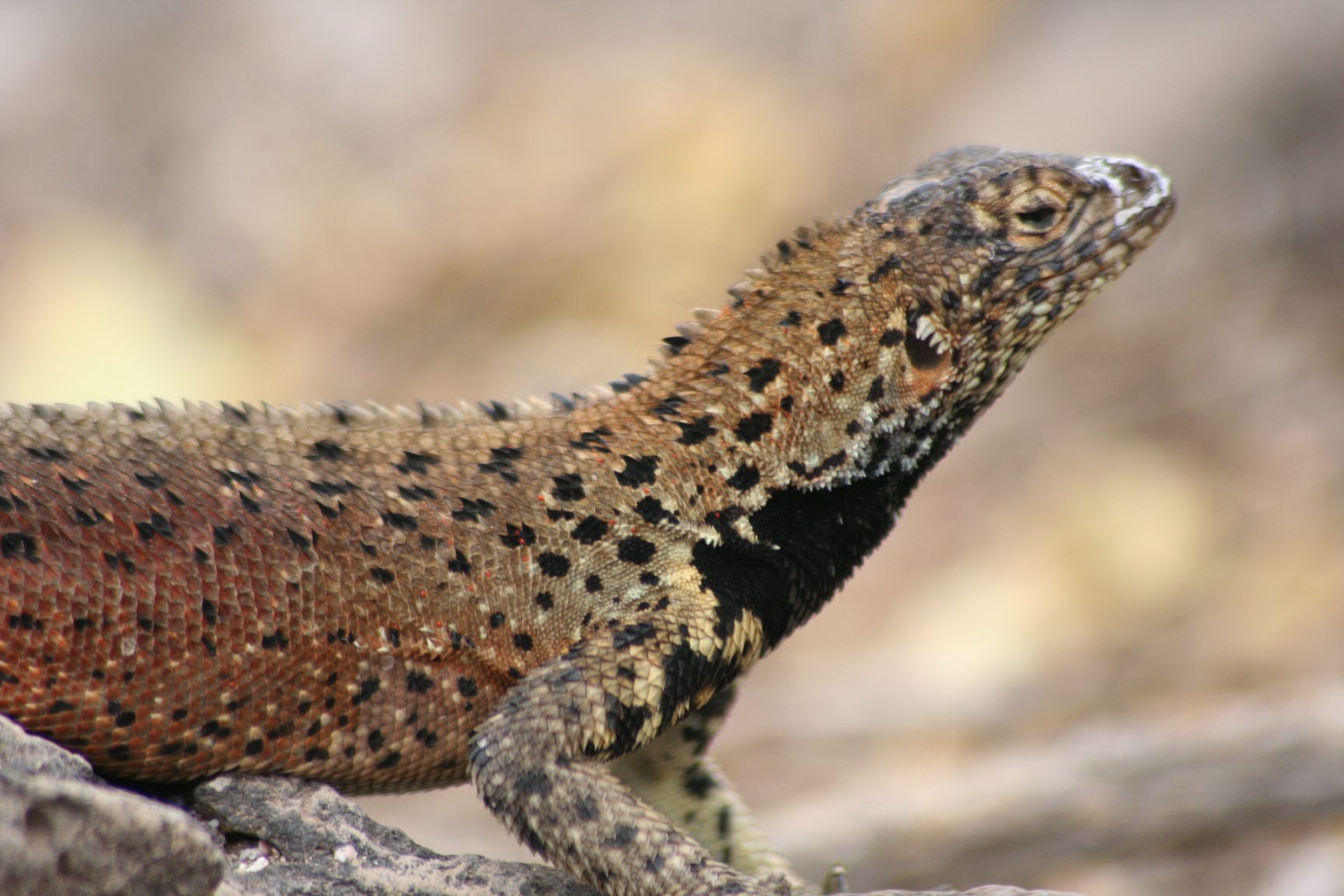
We set off back to the boat and were joined by a school of dolphins jumping in our wake – a magical end to the day! We enjoyed dinner and farewell cocktails…lovely!
We disembarked at 7am the next morning. Said farewell to the lovely Pepe and Carlos with their tips – they had been great knowledgeable guides.
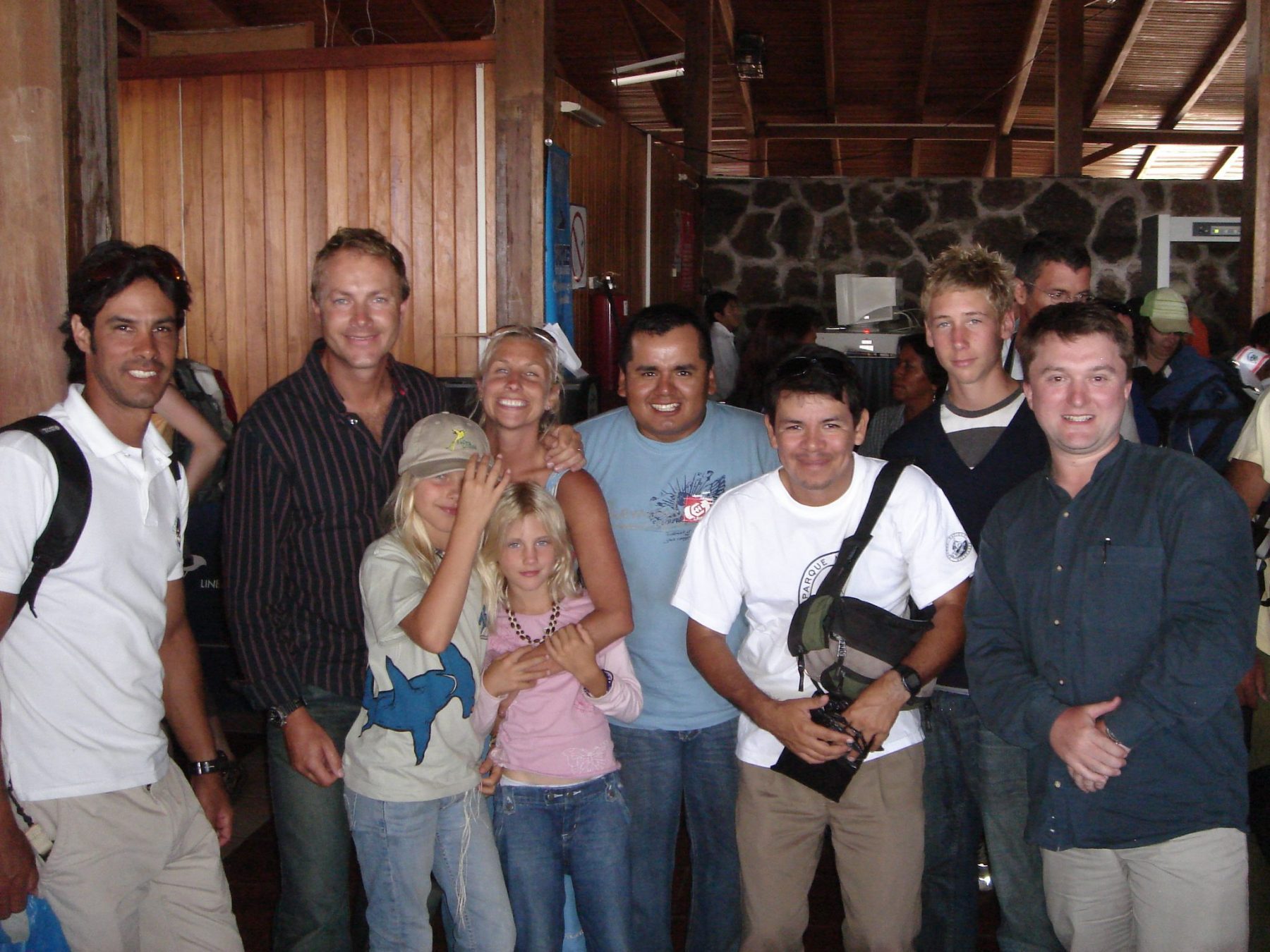
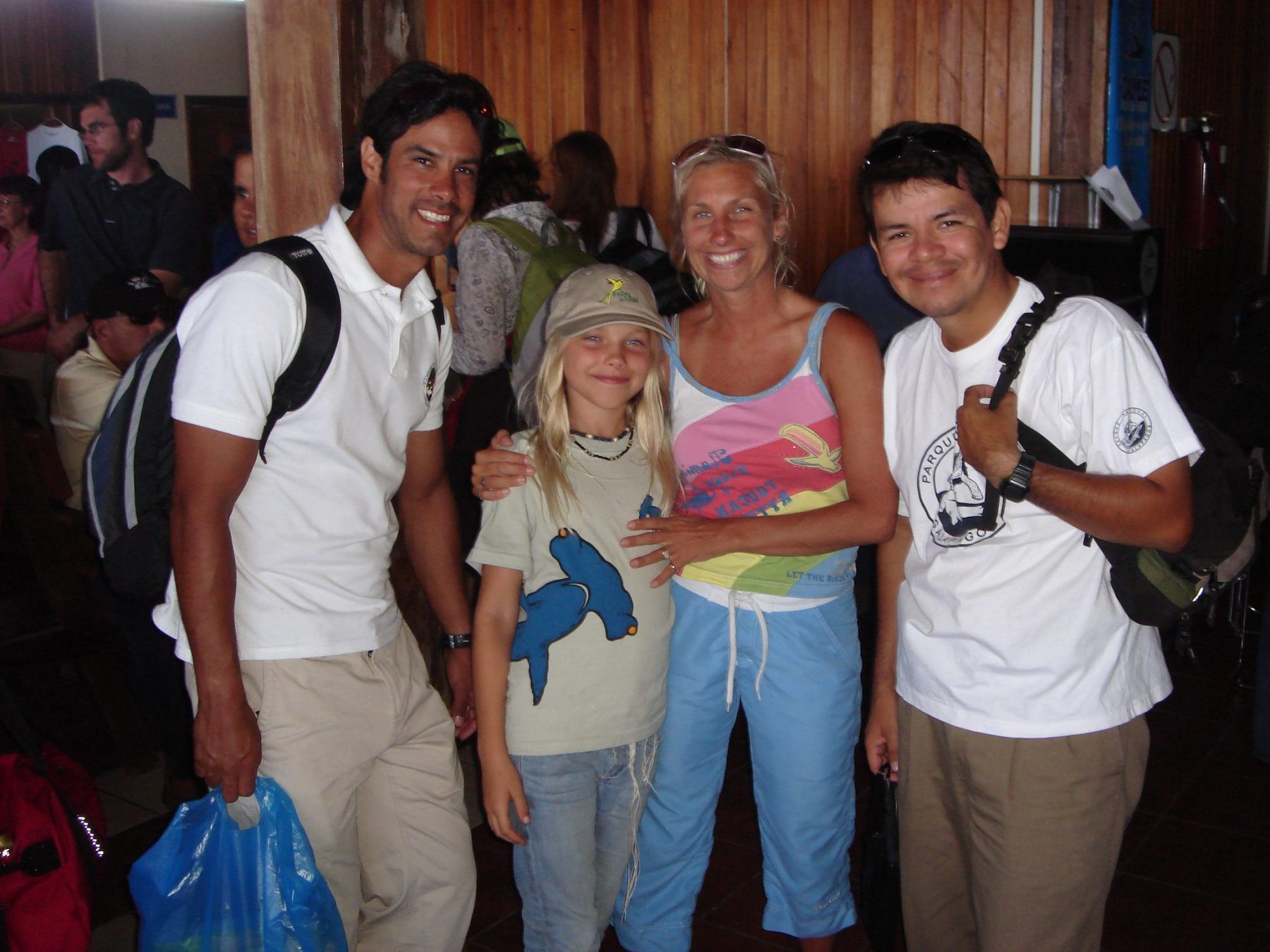
There was a lot of commotion at the airport as the likely next President of Ecuador had arrived and walked past us with his body guards.

We ordered room service for the girls after enjoying a sauna and jacuzzi at our hotel.
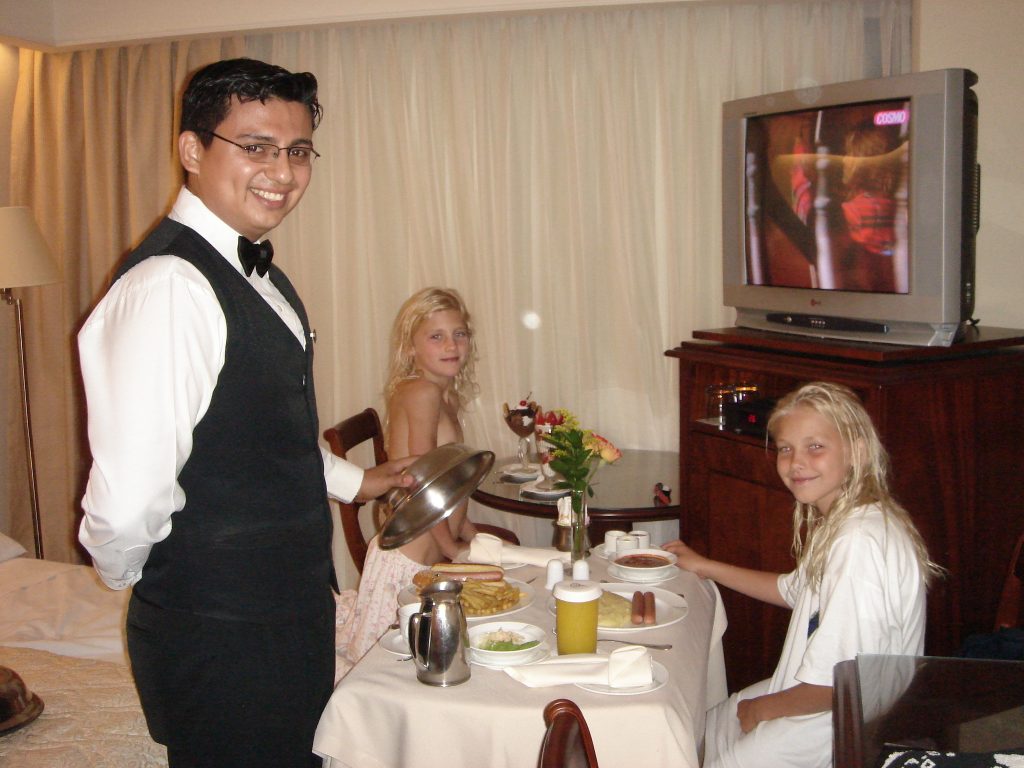
Trent, Paul and I went to the bar and enjoyed a yard of ale with Pete for our farewell to Ecuador drink – what a magnificent holiday!
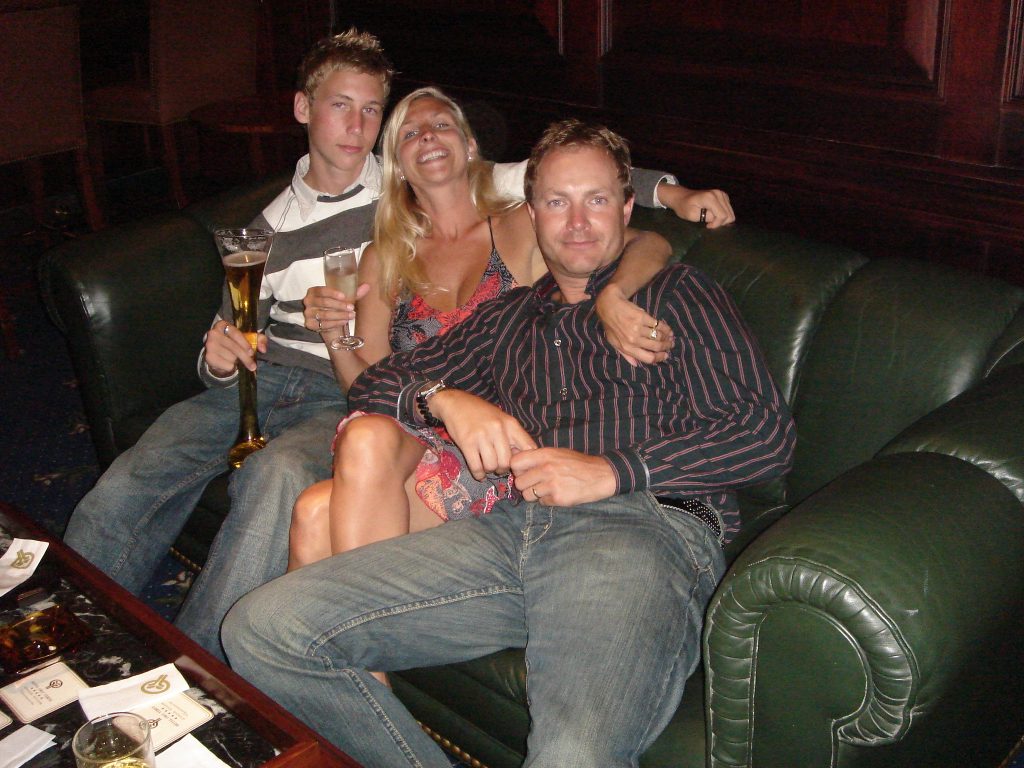
Go Back to: Galapagos
Go Back To: Santa Cruz Highlands

